#Southern Europe cinema
Explore tagged Tumblr posts
Text
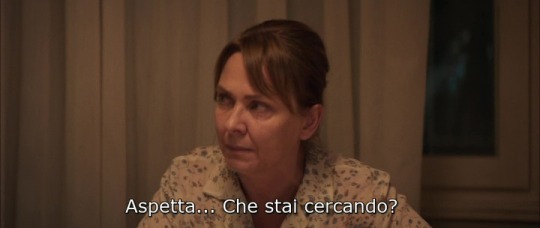

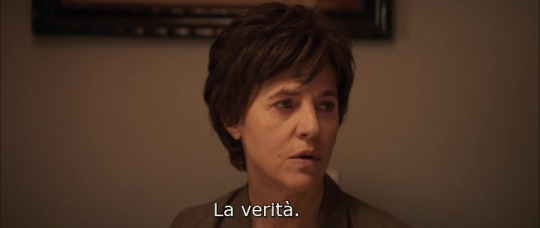


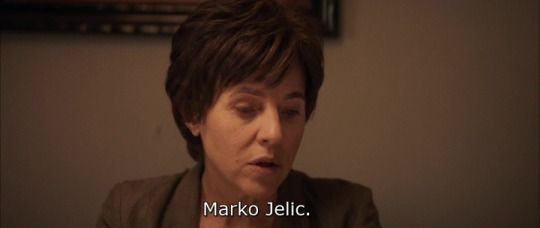


Šavovi [Stitches - Un legame privato] (Miroslav Terzić, 2019)
#Šavovi#Serbia#Miroslav Terzić#Europe#Stitches#Snežana Bogdanović#Marko Petrić#Jovana Stojiljković#Serbian cinema#2010s movies#European society#Marko Todorovic#Southern Europe cinema#Србија#београд#drama film#family#Yugoslavia#Jugoslavia#true story#corruption#truth#psychological drama#thriller#Belgrade#mother son relationship#Eastern Europe#Balkans#secret#empathy
2 notes
·
View notes
Text
LIMAX
I’m tired, I’m bored, let’s talk about the RE18, also sometimes known as LiMAX or Drielandentrein (three countries train).
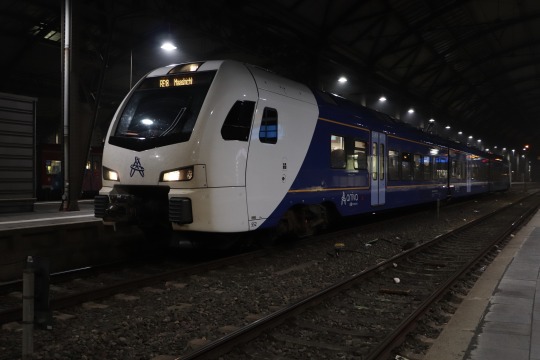
Euregio
This international regional train connects the region known as Euregio Maas-Rhine, the area around the point where Netherlands, Belgium and Germany meet. The region has a long shared and sometimes weird history. The main cities are Aachen (Germany, about 260,000 inhabitants), Liège (Belgium, about 200,000 people) and Maastricht (Netherlands, about 120,000 folks). A cluster of smaller towns around Heerlen (Netherlands, 86,000 citizens) forms a fourth major pole. Each of the regions gets roughly around half a million inhabitants each, but with a lot of green space in between. Here's a very crude map:

Blue are borders, black are relevant passenger rail lines, red is the one high speed line I'll talk about later.
This region is either right in the centre of Europe, or at the periphery of each of its respective countries, depending on what aspect you look at. Centre of Europe is undeniably better, but it requires international cooperation to work out. For me, living in Aachen, it’s great. My nearest Ikea is in the Netherlands, and I can watch French movies in cinemas in Liège.
But a lot of things aren't perfect, and the regional rail connections are a good example. Differing ticketing systems mean that it's not only expensive to cross the border, it's often very difficult to figure out what it costs at all. In a lot of places, trains only did short hops over the border, and then you had to change to a different train to get anywhere interesting. Some lines weren't even electrified yet. But in 2018, that was all about to change.
LIMAX
The Liège-Maastricht-Aachen express, in short LIMAX, was meant to change all that. The train is officially known as RE 18, which comes from the numbering scheme in the German state of Northrhine-Westphalia but is used for the entire route. It was supposed to run from Liège via Maastricht and Heerlen to Aachen, connecting all the major cities of the Euregio.
This particular train is a dutch project, and connecting Aachen with Liège only happens incidentally. There is a direct Aachen-Liège railway line, actually the oldest international line that’s still in use, including the oldest surviving German railway tunnel, and there is even a high-speed line that bypasses around 90% of the historic line. You can get from Aachen to Liège in less than half an hour on high speed trains (though regional trains are weird and impractical at the moment). This train line is really more about getting people in Heerlen a direct link to Liège, and people in Maastricht a direct link to Aachen.
The train
The train is operated by Arriva Netherlands Limburg, an independent subsidiary of Deutsche Bahn, who also operate all other rail and bus lines in the southern half of the dutch province of Limburg. They were actually placed second in the tender for this, but got promoted after it turned out that the actual winner Abellio (a daughter of the dutch state railroads NS) had illegal access to internal documents of previous operator and third-place scorer Veolia from France. To their credit, this came out because Abellio management learned of it and made it public, but rules are rules, so they still got disqualified. This is barely in the top three most interesting stories with Abellio, but we don’t have time for that here.
The service uses Stadler FLIRT 3 electric multiple units. FLIRT is an abbreviation, but nobody bothers remembering what it stands for. The manufacturer also offers or used to offer the TANGO (streetcar), the WINK (smaller version of the FLIRT), KISS (double-decker) and their newest high-speed train, the… SMILE. Cowards.
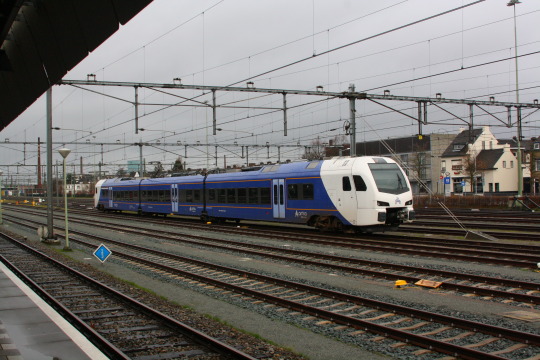
The FLIRTs for this service are specially equipped for the line, supporting all the different voltages in the overhead lines and all the other necessary support systems… almost. That’s going to become important later.
(Arriva Nederland Limburgs also has other trains, including other FLIRTs, that are only equipped for the Netherlands. I'll ignore them here.)
Services started in December 2018, theoretically. In practice the German leg of the service didn’t work yet. The problem was that the line from Heerlen to Herzogenrath (and then further to Aachen) used to be one of the few non-electrified lines in the region. It was electrified specifically for the RE18, and the work wasn’t quite finished yet. That got resolved, though, and the train is now working mostly well between Germany and the Netherlands. There are still some issues, like how it consistently announces that the doors will open on the left when they will open on the right and vice versa, but those are minor issues. The main problem for me is that it bypasses the Ikea station instead of stopping there.
The much bigger problem was the Belgian line, from (south of) Maastricht to Liège. The Belgian railway authorities were never that enthusiastic about the project to begin with, seeing how it was a private dutch company (though owned by the German government), and the platforms in the intermediate station of Visé were too low for step-free access and needed to be rebuilt. But the real main issue lay elsewhere: The new trains did not have ETCS.
Train control systems
We need a detour here about train control systems. Trains are controlled by signals. If a train passes a red signal, an accident usually follows, so over time every country developed different systems to make sure that doesn’t happen. The specific features of these vary widely. Some just warn the engineer that a red signal is ahead, and stop the train if the engineer doesn’t react. Some activate the emergency brake when the engineer passes a red signal, or when they don’t brake enough. More advanced ones for high speed lines tell the engineer the current allowed speed, upcoming speed changes and how far away they are, like a mini-GPS system, and constantly check that the engineer is driving within these limits. Many systems do a combination of different things.
Almost every country has its own of these systems, generally known by a cryptic abbrevation, and many countries have several. For example, Germany has PZB for all lines and additionally LZB for high-speed lines. The Netherlands have different versions of ATB, Belgium has TBL1+ and so on. The differences between them aren’t relevant for this post, but they’re all very different in what they do and how they do it. The RE 18 trains support all of them, except LZB because they’re not used on lines that make it necessary.
That’s expensive and annoying, so the European Union and European rail industries have developed a new system to replace all of them, the European Train Control System or ETCS. You will also hear the term ERTMS (European rail traffic management system), which includes ETCS and some other things, but in common parlance it usually means the same thing. Despite the name, it is also heavily used outside of Europe, e.g. on China’s high speed rail network.
And yes, that is very much a situation like the classic XKCD comic:

Source: XKCD 927, CC-BY-NC 2.5
(For americans reading this and wondering about PTC: That is a whole mess and almost everyone, including Wikipedia, explains it wrong, but for the purposes of this post we can just say that these systems and in particular ETCS are all something „like“ PTC.)
ETCS will only make sense once all European mainlines are equipped with it, which is still several decades away. But some countries are working harder than others to implement it. In particular, Belgium demands that all new trains since about 2015 have ETCS. Including the Stadler FLIRT for the RE 18.
In this case
The operator protested, because that requirement apparently came in while the trains were in production, and the line in question didn’t even have ETCS at the time (according to the latest Belgian maps it does now). To this day, the trains actually running there, as a Liège-Maastricht shuttle, do not have ETCS. So clearly it's not that essential… yet. Still, Belgian authorities refused to budge, so the trains had to be sent back to the manufacturer to get ETCS installed.
(Aside: ETCS is an open standard, and you can get ETCS equipment both for the tracks and for the trains from many different companies. Stadler, the manufacturer of these trains, only recently got into making ETCS equipment. Before that they had to buy it from competing train makers. These trains are among the first equipped with Stadler’s ETCS solution.)
The first train got it installed, returned to the line, and started tests. It worked well in the Netherlands, it worked well in Germany, it ran into Aachen station and worked well there, it ran back out of Aachen station and it stopped. Full emergency stop. After some testing it was determined that it always does an emergency stop when running out of Aachen station. And nobody is really sure why.
The low-down
We can make some vague guesses, though, because Aachen main station does have some ETCS equipment.

ETCS works partially with radio, but also with what are functionally giant RFID tags, the same basic concept like what you’ll find on a wireless credit card. They’re working at different frequencies and they’re designed for reliable reading at 450 km/h, but the basic idea is pretty much the same. These tags, known as „Balise“ (French for beacon) or Eurobalise, are mounted in the middle of the track, and are often yellow, at least when new. They can either send the same data every time, or be controlled with a cable from a computer.
Not everybody loves ETCS, but everybody seems to like the Eurobalise. It’s simple technology that can transmit a lot of information, and so there are a number of non-ETCS uses for it.
One such use case is transmitting the information of an older train control system. That is what the Belgians do with their TBL1+ system. It’s the same system as TBL1 (there is also a TBL2, but that was a bad idea and is gone now), but it transmits its information with Eurobalises. The idea is that you update these balises later to also transmit ETCS signals. Older trains can just get a balise reader, newer trains can just get ETCS, and you have only a single type of thing in the track instead of two. Switzerland is the first country that is fully ETCS equipped thanks to such a strategy, and Belgium is following suit.
The other use case is the "ETCS-based class B transition". Sounds tough but really isn’t: ETCS has a mechanism to tell the train, "hey, ETCS is ending, switch to ATB/PZB/TBL/…". In this context "Class B" means any system that isn’t ETCS (and that is on the list of things that ETCS knows about, for this purpose). The system ensures that the train really does switch to the other system, and that it stops if the switch doesn’t work. That is very useful and so most border crossings at least in Germany use it these days, even if no other part of ETCS is seen anywhere.
Both of these use cases are well established and ETCS specifically allows for them. Aachen central station is particularly fun because here you will find both of them combined. It is the border station for (passenger) trains to Belgium, so several tracks can be switched to Belgium mode, with Belgian electricity, and with Belgian TBL1+ train control system. The Eurobalises in these tracks pull double duty: They tell trains whether to switch to Belgian or German train control systems, depending on where the route is set, and if the Belgian system is to be used, they also transmit the information from that.
This isn’t new, and has worked well for years. The only other two types of passenger trains approved for the Netherlands, Belgium and Germany (and in one case also France), the Thalys PBKA and the ICE 3M high speed trains, also run through this station and they also have ETCS equipment and it all works.
But something about the combination together with the ETCS equipment in the new trains just doesn’t mesh well. It’s possible that there’s a bug in the software of the train. It’s possible that there’s a bug in the coding of the balises. Maybe it's something else; ETCS is a complex standard with a lot of updates, and the equipment in Aachen hasn't been touched in a while.
A theory I read on a dutch forum said that these balises tell the train to switch to combined PZB+LZB mode, but the train only has PZB mode and gets confused. I don’t know enough about ETCS to know whether this is plausible (and I know way too much about this stupid system already). All we really know for sure is that there are people working on this, and they're not telling us any of the details.
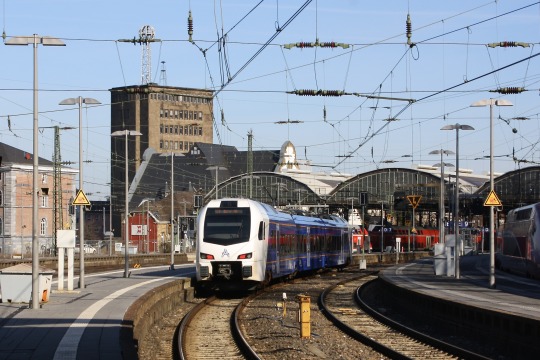
But after a few days where the train just didn’t run to Aachen at all, they found a solution. You know how I said that some tracks can be switched to Belgium mode? The others can’t, so why not just run the train into those?
That was actually easier said than done. Aachen has a lot of tracks, but most of them are used for parking trains. Most German regional trains to Aachen end in Aachen, and then wait here for half an hour or so until they return to where they came from. This isn’t required by the track layout or anything, it’s just convenient because that way, delays don’t build up quite as much. And the best location for that pause is, of course, right at the edge of the country. Centre of Europe? Yeah, sure, whatever…
So the solution is now that the RE18 runs into track 3 and stops in the middle of the platform, where it unloads all passengers. Then it drives forward to the end of the platform, and stays there. Another train, the RB33, pulls in behind it (there’s a red signal between them, don’t worry), and waits for its time to depart. Eventually it does, and shortly thereafter, the RE18 runs back to the middle of the platform, and then a few minutes later, back out again. It’s a silly little dance, but so far nobody has found a better solution.
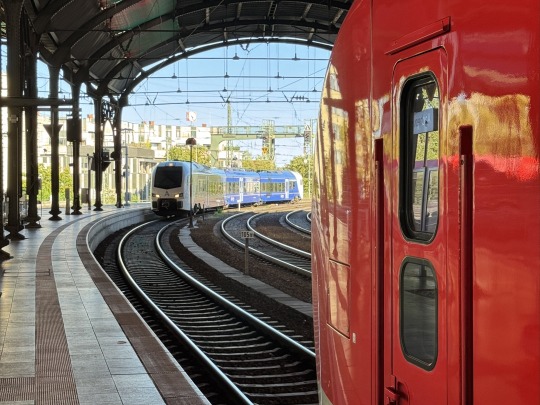
(Before you start, the end of platform 3 is very narrow and at a non-accessible height, so the train can't just load and unload there.)
As for the Belgian side of things, through-services to Liège will start this December! Woohoo! It seems this thing is finally working.
The Future
The long-term hope is to turn this from an hourly to a half-hourly service. It already is for most of its length, but right now the trains stop in Herzogenrath, just after the German border, because there is no space in the schedule to run them to Aachen yet.
Another hope is to create a completely new service from Aachen to Eindhoven, also using the same trains. Eindhoven wants to be connected to the German ICE network, Aachen wants to be connected to the dutch train network, so this sounds all great. Personally, I have doubt that these trains have enough capacity, but they are currently the only ones that would work. An issue with that is the actual line over the border. This used to be double-tracked, then got single-tracked. Now they want to double-track it again, but when it was electrified, they put the power poles right where the second track used to be. Not sure what they were thinking there.
All of these projects will take years, if not decades, and have in fact already taken years or decades. I’ve been in Aachen since 2007, and things like electrifying the line over the german-dutch border or creating a direct train from Aachen to the center of the Netherlands (or at least Eindhoven) have been in discussion for at least since then. On the one hand, it’s frustrating how slowly all these things are going. On the other, they are happening at all, and looking back ten years or so, it’s quite nice to see what has been accomplished.
I guess my one wish is that they’d finally let the train stop in Heerlen Woonboulevard, I’m tired of changing trains to get to Ikea.
120 notes
·
View notes
Text
Vampires before they were cool... (3)
A last post for now – maybe more shall follow.

I talked of how the vampire myth was born, and of the vampire craze that overtook Europe. But I only vaguely hinted at what the vampires were back then. So here’s a question: what was a “vampire” in the 18th century, and how did it differ from the creature literature and cinema built? This is not a complete or extensive answer, but here are some things to think about (that I am lifting from Jean Marigny’s works):
The 18th century solidified the three main traits of a vampire. 1) It is an “undead in body”: it is not a disembodied spirit, an ethereal wraith or a spiritual demon. It has a body, it is a physical entity on the material plane. 2) It leaves its grave at night, in order to suck the blood of the living, which in turn extends his unnatural life. 3) His victims become vampires too, after they die.
The idea that vampire lacks a reflection and cannot be seen in mirror was greatly exaggerated by fiction. It was not an universal trait of vampires: it was mostly present in areas where a Germanic culture dominated. There, vampires were said to lack both shadows and reflections in mirror – which was meant to symbolize how they had lost their soul.
The idea of vampires having very huge, big and pointy teeth was greatly exaggerated by the cinema – while indeed the confusion with werewolves led to the idea of vampires having fangs, not all the vampires actually had to bite their victim to drink their blood. Many vampires simply sucked or absorbed the blood directly through the skin, without using their teeth. And in many other cases, such as the “Nachzehrer”, the vampire doesn’t even touch the victim, he just absorbs its life-force from a long distance.

While the bat became THE iconic vampire-animal (especially thanks to Buffon, who named the blood-sucking Southern American bats “vampires” in 1761), traditional vampires are said to turn into all sorts of animals: they can be spiders, or even butterflies, just as they can turn themselves into straw or mist.
Garlic is not an universal remedy against vampire: the belief that garlic repels vampire comes mostly from Romania. However, the vampire of folklore was known to only be able to leave his grave at night, as he was forced to return to his tomb before the singing of the rooster. The vampire also fears holy water and running water (because water is the source and symbol of life), and other religious symbols of Christianity (like the crucifix). A wooden stake through the heart is the best way to put an end to a vampire, but sometimes it is not enough and requires additional rituals. In Russia, the stake must be carved out of aspen wood, because it was the wood in which the cross of the Christ was built; in other countries, people rather use hawthorn, supposed to be the origin of the Christ’s crown of thorns. In Dalmatia and Albania, a dagger blessed by a priest is used rather than a wooden stake. In Romania, the “execution” of a vampire is called “the great reparation” and must be performed at the first lights of dawn, and the stake must be plunged in one hit – else the vampire can resurrect. If the body doesn’t crumble into dust after having its heart pierced, one must decapitate the corpse (usually with a gravedigger’s spade) and burn it. The ashes then have to be either buried under the crossing of two roads, or scattered to the four winds.

Alright, but how do you recognize a vampire, huh? Things are even more complicated here because its region has its own variations. The most generic and recognized trait is that, when in his grave, the corpse that is the vampire doesn’t have either a rigor mortis, or any trace of rot, even several weeks after being buried. Another common trait of vampires is how hairy they are: they have bushy eyebrows, that often join together above the nose, and they have hair in the palm of their hands. Romanian vampires even have a short tail covered with fur, which grows with the heat, and which is supposed to be giving them magical powers. When there is a vampire epidemic, a ritual to know which grave is the one of the vampire went as such: a virgin teenager had to ride a horse who also had never known sex, either entirely black or entirely white. The horse had to enter the cemetery, and supposedly reacted to the grave where the vampire was to be found: a vampire tomb was also identified by how you could find little holes on the ground near it – because it was through these holes that the vampires escaped each night, turning himself into mist. It was also believed that the people born of the sexual union of a male vampire and a female human had the gift of immediately sensing and recognizing vampires: they were called in Serbia “vampiritch” or “vampirovitch”, while in Bohemia and Hungary they were called “dhampirs”.
Finally: how do you become a vampire? Good question! Technically speaking, every human being can become a vampire after death. Nobody is prevented from the risk. But some people are more likely than others to turn into blood-sucking monsters. As I said before, all those that did not received proper Christian funerals or were not buried in holy ground were more likely to become vampires. People who died by suicide or by violent death were more at risks, just like excommunicated people, witches/warlocks, and stillborn infants. Other individuals are predisposed to become a vampire rather because of traits they had when they were born: people born with one or several teeth in their mouth, people born with a “caul” (a piece of the placenta or of the amniotic membrane stuck on the face or head of the baby), people born with either very dark eyes or very bright-blue eyes ; as well as people born with red hair (which were thought to be the “hair of Judas”) or with red spots over their body. When these people came to pass away, extra-precautions were taken to make sure they did not return as a vampire: in Romania, a nail could be plunged in the corpse’s forehead, or the body was pricked with many needles ; or the body was covered with the fat of a pig killed on Saint Ignace’s Day.
It was also very common to place an item in the mouth of the defunct, to prevent the chewing of the shroud or to prevent the soul from returning inside the body: in Romania it was garlic, in Greece it was a Christian host, in Saxony it was a lemon. Sudetenland had the tradition of wrapping the dead in a sort of large stocking: the vampire could only break one stitch of it per year. In Russia, poppy seeds were rather placed in a vampire’s grave, cursing them to counting the seeds each night instead of going out into the world.
People who died excommunicated or of suicide were constantly buried at a crossroad formed by two paths. In Serbia, to protect a house from a vampire attack, a cross made of tar was painted on the doors and the windows ; while in Romania, garlic was hanged in every room, and rubbed onto the doors, windows, chimneys and keyholes. Finally, in Russia, all the roads leading to the cemetery had to be covered in either poppy seeds or briar thorns: the vampire would be forced to pick them up one by one on its way.

19 notes
·
View notes
Text
Deep dives into folklore: Belgian folklore
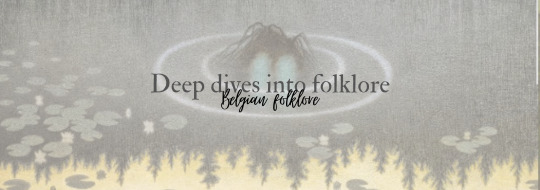
Belgium, nestled in the heart of Europe, boasts a cultural landscape steeped in folklore and mythology that has thrived across centuries. This exploration delves into the captivating narratives and enduring traditions that have shaped Belgian folklore, illuminating the cultural tapestry of this diverse and enchanting region.
Belgian folklore is adorned with a diverse array of mythical creatures, each adding its own hue to the cultural canvas. From the water-dwelling Nixen to the forest-dwelling Wild Huntsman, these fantastical beings embody the collective imagination of the Belgian people, woven into the fabric of their storytelling traditions.
In the southern Walloon region, folklore weaves tales of the Géants, colossal figures parading through festivals, representing both mythical and historical elements. The Géants embody a living mythology, embodying the resilience and spirit of the communities they traverse, leaving an indelible mark on the cultural identity of the Walloons.
Flemish folklore is colored by traditions that celebrate the cyclical nature of life, from the lively Kattenstoet (Cat Parade) in Ypres to the whimsical Carnaval de Binche. Amidst these festivities, the figure of the 'Huisgod,' or house spirit, stands as a guardian and symbol of domestic harmony, reflecting the importance of familial ties in Flemish culture.
Belgium's folklore is haunted by spectral entities, such as the Kludde and Lange Wapper, whose eerie tales resonate across generations. These ghostly apparitions, born from the depths of Belgian imagination, serve as cautionary figures, embodying the moral compass of a society navigating the boundaries between right and wrong.
Belgium's rich history has given rise to mythic tales surrounding ancient landmarks, such as the dolmens of the Ardennes. These megalithic structures, wrapped in the cloak of legend, connect the present to the distant past, symbolizing the enduring legacy of Belgian folklore in shaping perceptions of the land itself.
While rooted in tradition, Belgian folklore continues to adapt, finding new expression in contemporary culture. From literature to cinema, modern storytellers draw inspiration from ancient myths, breathing new life into the timeless narratives that have defined the Belgian cultural narrative.
In the realm of Belgian folklore and mythology, the tales, creatures, and traditions form an intricate web, binding communities and generations together. The colorful threads of these narratives, woven into the cultural fabric, transcend time, offering a glimpse into the collective imagination of a nation that cherishes its mythical past while embracing the ever-evolving stories that shape its cultural identity. The richness of Belgian folklore stands as a testament to the enduring power of storytelling, echoing through the ages and resonating in the hearts of those who continue to unravel its captivating threads.
#writeblr#writers of tumblr#writing#bookish#booklr#fantasy books#creative writing#book blog#ya fantasy books#ya books#writers block#national novel writing month#writers#teen writer#tumblr writers#writer problems#writblr#writerblr#writers community#writers corner#writerscommunity#writers on tumblr#writerslife#writing blog#writing community#writers and poets#deep dives into folklore#deep dives#folklore#myths
13 notes
·
View notes
Text
The Settlers review – ultra-violent study of Chile’s butchery of its indigenous people
★★★★☆ Europe’s early 20th-century exploitation of Tierra del Fuego is told in an unsparingly bloody drama-thriller by first-time director Felipe Gálvez Haberle

Brutish … Alfredo Castro (left) and Mark Stanley in The Settlers. Photograph: Quijote Films
his almost unbearably brutal and violent western drama-thriller from first-time feature director Felipe Gálvez Haberle was a prize winner at Cannes and Chile’s official entry for best international feature at the Academy Awards. At once explicit and yet mysterious and elliptical, it dramatically recreates some of the story behind the exploitation and colonisation of Tierra del Fuego by European commercial interests and the Santiago political establishment at the beginning of the 20th century. This involved the genocidal slaughter of Indigenous peoples by the now notorious businessman José Menéndez, a kind of Latin American oligarch who had been granted land rights for sheep farming, and used mercenaries to hunt and butcher Patagonian natives; these hired killers included ex-British Army soldier Alexander MacLennan, known as the “red pig”.
Chilean character actor Alfredo Castro plays the cold-eyed Menéndez, and Mark Stanley is the brutish MacLennan who still wears his red military tunic and affects the title “Lieutenant”. An ugly scene suggests that his capacity for violence, always substantial, escalated at least partly due to being brutalised himself. Haberle imagines an American “Indian-hunter” called Bill (Benjamin Westfall) who goes out with MacLennan on their murderous expeditionary adventure into the vast and forbidding southern wilderness and they have a tracker called Segundo (Camilo Arancibia), who is a “mestizo” – part indigenous – and resented by Bill who fears Segundo will turn on them.
There is a scary encounter with another British soldier-for-hire, played with dark menace by Sam Spruell, who appears to have the same vocation as MacLennan, but for whom the violence and alienation have become (even) more normalised. With a terrifyingly empty landscape shot by Simone D’Arcangelo and crazed, clamorous, timpani-clashing score by Harry Allouche, The Settlers is really unsettling: an evocation of the violence and colonial brutality mixed into the foundations of Chile’s nation state, and which, it is implied, provided a lesson in political violence for later on.
And what is worse is the history rewriting and legacy management: a sequence in which Indigenous peoples are forced to pose for semi-official photographs in demure western clothes, coerced into erasing their own distinct identity and appearing to cooperate in a new voluntary submissive absorption into white culture. It’s a fierce, stark, almost primitive parable of cruelty and power.
The Settlers is released on 9 February in UK and Irish cinemas.
#Adriana Stuven#Alfredo Castro#Antonia Girardi#Argentina#Austria#Benelux#Benjamin Westfall#Camilo Arancibia#Cannes Film Festival#Chile#Chilean Cinema#Cine Sud Promotion#Cinema#Cinema Inutile#Denmark#Dulac Distribution (France)#Emily Morgan#English#Felipe Gálvez Haberle#Festival du Nouveau Cinéma de Montreal#Film I Väst#Finite Films#France#Germany#Giancarlo Nasi#Harry Allouche#India#International Film Festival and Forum on Human Rights#Italy#Latin America
2 notes
·
View notes
Text
⛧☥⚧🜍‡⛧☥⚧🜍‡
Hi y'all, call me Lux, 25y, genderqueer (any pronouns), pan, Italy :)
More info below the cut:
Just a Southern Gothic born human raised and living in Gothic Europe.
Haunter of places, seeker of art, collector of things.
Obsessed with the aesthetics of horror, Southern gothic, American gothic, flesh, blood, cannibalism, religious art, eschatology, anatomy, dark art, and all that is strange and unusual.
Child of Cain, music obsessed (anything and everything, especially dark or spooky), lover of cinema (horror, thriller, neo noir, surrealist and weird), art (any and all kinds), fashion (workwear/utility/camo/americana), photograpy, purple, root beer, chocolate, and of the connections people forge, especially queer ones.
I post things from my very large and ever expanding personal archive, and sometimes my own writings and photos.
Always happy to make friends so reach out if you want (let's exchange music!) :)
6 notes
·
View notes
Text
Le Puppy...


Judith Fero.
────────────── · · · ♡
❝ Why does it take a survivor to live? I don't want an existence sprinkled with great memorable moments, I want a good one. I'll make a good one. And I accept that it will be sprinkled with bad, heartbreaking memorable moments. That's how it should be anyways. ❞
Age:: 24 years old.
Height:: 169 cm.
Born in Benin. Raised in the South of France. Studying for her PhD in the U.S.A.
Polyglot:: Goun, French, English, Spanish and Archaic & Post-Cicero Latin.
Alignment:: Neutral Good.
Sexuality:: She cares little for gender but does need for a connection to form before any sort of sexual desire arises.
Hobbies:: Strong Swimmer since youth, Books were her home once so Literature holds a special place in her heart, Photography and Cinema she is newer to but she has been delving into it earnestly.
Trained in:: Kajukenbo, Nikkyu currently (brown belt with two stripes).

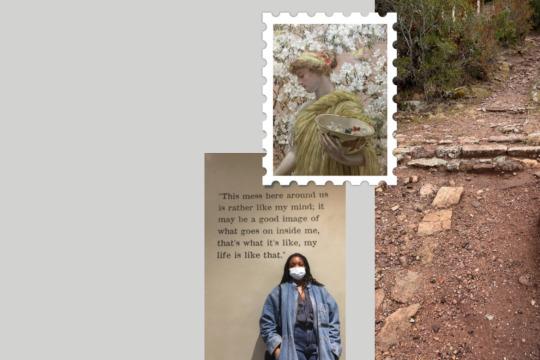
Specie :: Varies on the verse.
The Vampire Diaries/The Originals: Currently mortal. (But an unaware werewolf who hasn't killed anyone yet thus not triggered the curse. This way she can still be turned by a vampire if before the curse is triggered, probably killing the potential gene in the process)
Teen Wolf: Mortal. Substitute Teacher at Beacon Hills High.
Shadowhunters: Mundane-yet-Sighted in the employ of the Paris Institute formerly but now transferred to the New York Institute as a Intelligence Analyst so fully trained to protect herself.
MCU: Interning as an Intelligence Analyst for S.A.B.E.R, somehow, following a M.A Thesis labeled: "Towards a communal grand strategy and foreign policy vision to approach extraterrestrial and extra-dimensional threats." that Bruce Banner actually read and heavily critiqued which led to some interesting Twitter Exchanges. The subject of her current thesis being: "Exolinguistics as a tool of diplomacy and understanding extraterrestrial and extra-dimensional history and customs." Perhaps leading towards a typology of the currently known extraterrestrial and extra-dimensional nations/people/populations.
DC(CU, Series and) Comics: Mostly Broke Gothamite though currently writing for the international politics section of the Gotham Globe. Currently living in downtown Gotham and relatively near crime alley. (Former member of We Are Robin depending on the timeline.)
The Blacklist: She's an Intelligence Analyst newly transferred to the task force who happens to be related to a number through his daughter with whom she went to college with in London. Number 171: Yusuf Idowu, known as Ijapa (The Turtle in Yoruba). Head of one of the biggest drug cartel in Nigeria, moving mostly cocaine with growing importance in Europe, especially Southern Italy and the the Netherlands. He is stopping by the U.S.A as a neutral ground between him and some head of a Central American drug trafficking syndicate to hopefully begin a partnership. Ijapa's choice to increase foreign partnerships comes from a growing interest in establishing a certain hegemony in Nigeria, thus controlling the flow of drug in the Gulf of Guinea.
To Be Added.


Personality:: Not particularly eye catching, Judith carries a rather cold aura. She will deny having a resting bitch face but will admit that smiling doesn't come naturally to her. It's more so brought out of her, by people, by events. She makes herself irremarkable à la Clark Kent, camouflaging in what some would call 'basic' pieces of clothing and an inherent discretion. It's not that she can't make herself noticed if she so wills, no, she likes making herself a wallflower, quiet, forgettable. It allows her to leisurely observe others, she notices but only states so if she has a reason to. It makes her seem trustworthy to others too, capable of keeping secrets, of compartmentalising when it comes to her own emotions. Panic though, does silence her, takes away her voice and freezes her body for so very important seconds before she can get it back together. When interacting with others, she tends to be introverted though perfectly adequate in social settings, even drawing people to her, rarely out of her features but her achievements, her poise, her discourse, do stand out. She will happily entertain a heated conversation or trade barbs but has little interest in polite niceties and small talk at the coffee machine, rather quiet on the job. She consumes alcohol for the experience in terms of flavor, not particularly seeking the buzz and having a pretty good tolerance born out of downing a good chunk of shots in undergrad. Patient, she is able to enjoy the process of things, no matter how long and drawn out, no matter how frustrating on the moment. Curious, she is eager to learn, to pull things apart and get in there to figure it out but also to peek, to peep, to keep an open hear. She likes to have the in, to know what is happening in the room where it happens but pays little more than passing interest to what she believes is just gossip.
Backstory:: To Be Written.
#oc#original character#roleplay muse#roleplay#roleplay character#tvd oc#the originals oc#mcu oc#dc oc rp#the blacklist oc#shadowhunters oc#teen wolf oc
3 notes
·
View notes
Note
I think Timothee’s Oscar nomination was a fluke . He got lucky about that year not being so competitive in the male category and that the Oscar’s love a “upcoming actor” revelation once in a while but his performance in CMBYN pales in comparison to the people he was nominated with. He got incredible lucky.
I agree Tom Holland is a better actor but doesn’t seem to have a good agent. And Hollywood wants to make Timothee a thing so bad. But when I heard Tom Holland was also in the running for Wonka I was confused because doesn’t he has dancing background and he seems to do better with charismatic roles. He seemed like the better option altogether.
And another thing, Timothee’s hype should’ve been given to Jharrel Jerome or Lucas Hedges, two actors that were having their breakthrough that same year but barely got any hype for their performance. And mind you, Jerome is an Emmy winner which breakthrough role was in Moonlight, but he hasn’t been able to get the roles Timothee gets offered and he is the superior actor. But we know Hollywood so.
(x)
I definitely agree in terms of 2017 being a weak year for lead actors (gosh, while I think Daniel Kaluuya in Get Out was hands down one of the best performerances of the year, the Academy hates horror, and the fact that he got a [deserved!!] nom for that role lowkey shows what a weak year it was outside of genre cinema tbqh), but I don't know if I think Timothee's nomination was a fluke per se.
I actually don't particularly like Call Me By Your Name as a movie - I thought it was wildly overrated seeing it upon its release, and have rewatched it since and just - - never especially understood the hype, but I do think Luca Guadagnino had established himself as a director the Academy was Aware Of after I Am Love's nomination in '09, and I think there's a particular softness in terms of voters for an 'American falling in love in Italy' film dating back at the very least to Audrey Hepburn's 1953 Roman Holiday and more importantly to me specifically, haha, Katharine Hepburn's sublime turn in the 1955 Summertime.
I think that particular softness directly paired up with Hollywood's realisation that there were no young male stars to pin their hopes onto, and as a result Timothee probably felt dropped into their hands as a well-connected young actor in a prestige indie by an Academy-watched director that was a minority-focused, sun-soaked Europe coming of age story. That's catnip for The Academy, not a fluke, although yeah, I do think there was quite a lot of luck involved there too, haha.
I agree that Hollywood's committed to making him happen, but I think a huge part of that is because there hasn't really been an alternative up until this year. There have been so many failed male star attempts in the last decade (Dane DeHaan, Logan Lerman, Taylor Kitsch, Miles Teller and Alden Ehrenreich all spring to mind, and yeah, they all still have varying degrees of decent careers, but their 'movie star potential' seems shot [I also even like some of these dudes!]) and he's the one that's stuck the most, so I can't really blame the industry for trying to make him Leo 2.0.
And yeah, Tom Holland's agent... Look, I'm a controversial person always in this convo because I love The Devil All the Time, haha, and think he was genuinely so good in it, but I'm baffled by the seeming expectations around that movie as a launching pad for him professionally mid-MCU as Southern Gothic is - - y'know. Pretty niche as a genre overall! His team just doesn't really seem to know what to do with him though, and keep thrusting him back into roles that are both too young for him (Chaos Walking), and do nothing with his actual talent (Unchartered).
I do think he would've been better in Wonka than Timothee, but I'm also kind of glad he's not set up to fail with another soulless and bloated Disney film that could just further reduce his options. I said it in the last post, but I am genuinely so curious as to how he goes in the Fred Astaire bio pic, especially given it has the same director as Wonka (Paul King), and two writers who between them have written Billy Elliot, Rocketman, Jessica Jones and Mrs. America. I'm also less precious than others about Fred Astaire not wanting a bio pic about himself, so y'know, I have that too, haha, but I do wonder if that discourse will come into play when the movie actually comes out.
And agreed re: Jharrel Jerome on all fronts, but it's so nice to see him have such success this year with I'm a Virgo (planning on binging that when my office closes next week!). Hopefully he's the one with the richer career longterm, and Lucas Hedges - - man, he's a wild case to me, because I do think he's talented, and he also has so much nepotism on his side (his dad is THE Peter Hedges!! He arguably launched Leonardo DiCaprio's career!), so I tend to think he's just in a bit of a slump, but who knows.
#it'll be funny if timothee's bob dylan bio pic comes out the same year as tom's fred astaire one#i'll be perched for the drama#especially because as someone VERY familiar with both dylan and astaire because of a) my dad and b) studying both at uni#i have a lot of thoughts on borh of their casting haha#film asks#welcome to my ama
6 notes
·
View notes
Text
10 YEARS AGO TODAY
ON NOVEMBER 27TH, 2013
DISNEY INVITES YOU ALL
TO WITNESS
THE SINGLE MOST SPECTACULAR ANIMATED FILM OF 2013 & THE BIGGEST ANIMATED FILM OF DISNEY'S CINEMA 🎥
SINCE THE DEBUT OF THE LION KING 🦁 🤴 IN 1994
BASED ON THE INSPIRATION OF THE HANS CHRISTIAN ANDERSEN'S FAIRY 🧚♀️ TALE " THE SNOW ❄ QUEEN 👸
IN A FAR AWAY LAND
IN A ENCHANTED COUNTRY IN EUROPE 🇪🇺
LIES A KINGDOM 🏰
A PEACEFUL KINGDOM OF TRANQUILITY & HEART ❤
& THE SNOW ❄ THERE IS LIKE MAGIC ✨
THAT KINGDOM 🏰 IS KNOWN AS
THE KINGDOM OF ARENDELLE 🏰❄🇳🇴
THERE THE CITIZENS OF IT'S JOYOUS & GRACIOUS HOSTS
THE KING 🤴 & QUEEN 👸 OF ARENDELLE
& THEIR LOVELY 2 DAUGHTERS WHO ONE DAY, ONE OF THEM WILL BE THE FUTURE QUEEN 👸 OF THEIR BEAUTIFUL KINGDOM
WATCH OVER THE PEOPLE & RULE WITH KINDNESS & MERCY FOR ALL THOSE LIVE IN THE LAND
PRINCESS ELSA👸🏼 OF ARENDELLE POSSESSES MAGICAL POWERS ❄ ALLOWING HER TO CONTROL ICE 🧊AND SNOW❄, OFTEN USING THEM TO PLAY WITH HER YOUNGER SISTER ANNA IN THEIR CHILDHOOD.
AFTER ELSA ACCIDENTALLY INJURES ANNA WITH HER MAGIC, THEIR PARENTS
THE KING 🤴AND QUEEN 👸
TAKE THEM TO A COLONY OF STONE🗿 TROLLS LED BY PEBBLE, WHO HEALS ANNA BUT ERASES HER MEMORIES OF ELLA'S MAGIC ✨.
PABBBIE WARNS ELSA THAT SHE MUST LEARN TO CONTROL HER POWERS,
AND THAT FEAR WILL BE HER ENEMY.
THE SISTERS ARE ISOLATED WITHIN THE CASTLE🏰, THE GATES OF WHICH ARE NOW CLOSED OFF TO THE PUBLIC. OUT OF FEAR OF HER INCREASINGLY UNPREDICTABLE POWERS, ELSA CEASES ALL CONTACT WITH ANNA, CAUSING THEM TO BECOME EMOTIONALLY DISTANT.
WHEN THE SISTERS ARE TEENAGERS, THE KING 🤴 AND QUEEN 👸 ARE LOST AT SEA AND PRESUMED DEAD.
UPON REACHING ADULTHOOD, ELSA IS DUE TO BE CROWNED QUEEN 👸🏼 BUT FEARS THAT HER SUBJECTS WILL DISCOVER HER MAGIC✨ AND FEAR HER.
THE CASTLE GATES ARE OPENED FOR THE FIRST TIME IN YEARS TO THE PUBLIC AND VISITING DIGNITARIES, INCLUDING THE SCHEMING DUKE OF WESELTON AND PRINCE 🤴 HANS OF THE SOUTHERN ISLES.
WHEN THEIR KINGDOM 🏰 BECOMES TRAPPED IN PERPETUAL WINTER ❄, FEARLESS ANNA👸 JOINS FORCES WITH MOUNTAINEER KRISTOFF🤴 AND HIS REINDEER🦌 SIDEKICK TO FIND ANNA'S SISTER, SNOW QUEEN ELSA
AND BREAK HER ICY SPELL🧊. ALTHOUGH THEIR EPIC JOURNEY LEADS THEM TO ENCOUNTERS WITH MYSTICAL TROLLS🗿, A COMEDIC SNOWMAN ⛄ HARSH CONDITIONS, AND MAGIC ✨AT EVERY TURN.
ANNA AND KRISTOFF BRAVELY PUSH ONWARD IN A RACE TO SAVE THEIR KINGDOM FROM WINTER'S COLD GRIP 🥶.
DISNEY & WALT DISNEY ANIMATION STUDIOS PRESENTS
THE 1# DISNEY FILM OF 2013
& THE GLOBAL SENSATIONAL FILM THAT TOOK LITTLE GIRLS 👧 EVERYWHERE TO A MAGICAL PLACE WHERE YOU COULD LET IT ALL GO.
KRISTEN BELL 🔔
IDINA MENZEL ❄
JONATHAN GROFF 🦌
& JOSH GAD ⛄
IN
DISNEY'S
FROZEN ❄👸👸🏼🤴🏰⛄🦌
HAPPY 10TH ANNIVERSARY TO DISNEY'S FROZEN ❄👸👸🏼🤴🏰⛄🦌
IT'S TIME ONCE AGAIN. TO LET IT GO ❄😉 #Frozen #Disney #PrincessElsa #PrincessAnna #Kristoff #Sven #Olaf #KristenBell #IdinaMenzel #JonathanGroff #JoshGad #LetItGo



#Frozen#Disney#Princess Elsa#Princess Anna#Kristoff#Sven#Olaf#Kristen Bell#Idina Menzel#Jonathan Groff#Josh Gad#Let It Go#Spotify
4 notes
·
View notes
Note
This is true and I’m Portuguese
It kills me that Alba is racist because everyone in Europe, where I’m from looks at Portugal as a poor, dirty, knockoff Mexico. // so true. Pt is the most infamous country in Europe in many ways. / let me explain. It’s underdeveloped country. No science, innovation, not even having any reputable university, not a famous brand or company. They have dirty roads, cold people when consider them as Mediterraneans, they are too cold. I don’t know any big name from pt in literature, science, cinema, art etc. It doesn’t look like a Europe country, most likely an South American country. However it’s people are not cheerful and nice like southern Americans. I have never heard anything good about that country, but trashs on the roads, old houses most likely looks like ruins. They are just lazy people who are not even cleaning their own houses and prefer living in dirts.
The only reason I’m answering this is because I’ve been to Portugal. It’s a beautiful country and the people were lovely. I would gladly go back. I had a really nice time there.
1 note
·
View note
Text

⸻ have you heard of SWEET DREAMS (ARE MADE OF THIS) by eurythmics, well, it describes MARINA HEINZ to a tee! the fifty-three year old, and SCREENWRITER & PRODUCER was spotted browsing through the stalls at portobello road market last sunday, do you know them? would you say SHE is more WORRISOME or more UNORTHODOX instead? anyway, they remind me of sleepless nights, blazers worn with a pair of jeans, fringe hair with colorful highlights every now and then, lone trips to the cinema, and frequently traveling on their own, maybe you’ll bump into them soon! [ FRANKIE / SHE/HER / 26 / CST / INSECTS LOL ]

» BASICS.
𝐅𝐔𝐋𝐋 𝐍𝐀𝐌𝐄. marina christiane heinz
𝐍𝐈𝐂𝐊𝐍𝐀𝐌𝐄(𝐒). ina, mari, mina, ri & rina
𝐀𝐆𝐄. fifty-three ( 53 )
𝐃𝐀𝐓𝐄 𝐎𝐅 𝐁𝐈𝐑𝐓𝐇. 18th of february, 1970
𝐀𝐒𝐓𝐑𝐎𝐋𝐎𝐆𝐈𝐂𝐀𝐋 𝐒𝐈𝐆𝐍. aquarius
𝐏𝐋𝐀𝐂𝐄 𝐎𝐅 𝐁𝐈𝐑𝐓𝐇. los angeles, california
𝐇𝐎𝐌𝐄𝐓𝐎𝐖𝐍. stuttgart, germany
𝐎𝐑𝐈𝐄𝐍𝐓𝐀𝐓𝐈𝐎𝐍. bisexual + demi-romantic
𝐆𝐄𝐍𝐃𝐄𝐑 + 𝐏𝐑𝐎𝐍𝐎𝐔𝐍𝐒. cis woman + she ┊ her ┊ hers
𝐍𝐀𝐓𝐈𝐎𝐍𝐀𝐋𝐈𝐓𝐘. american ╱ german ╱ british
𝐄𝐓𝐇𝐍𝐈𝐂𝐈𝐓𝐘. white european — ( german )
𝐑𝐄𝐋𝐈𝐆𝐈𝐎𝐍. monotheistic ╱ roman catholic ( raised & agnostic )
𝐋𝐀𝐍𝐆𝐔𝐀𝐆𝐄(𝐒) 𝐒𝐏𝐎𝐊𝐄𝐍. german & english
𝐑𝐄𝐋𝐀𝐓𝐈𝐎𝐍𝐒𝐇𝐈𝐏 𝐒𝐓𝐀𝐓𝐔𝐒. single
𝐂𝐔𝐑𝐑𝐄𝐍𝐓 𝐋𝐎𝐂𝐀𝐓𝐈𝐎𝐍. london, england
𝐎𝐂𝐂𝐔𝐏𝐀𝐓𝐈𝐎𝐍. film producer & screenwriter
𝐅𝐈𝐍𝐀𝐍𝐂𝐈𝐀𝐋 𝐒𝐓𝐀𝐓𝐔𝐒. ❝ wealthy ❞
𝐄𝐃𝐔𝐂𝐀𝐓𝐈𝐎𝐍 𝐋𝐄𝐕𝐄𝐋. high school diploma + bachelor’s degree in english & film studies
» APPEARANCE.
𝐅𝐀𝐂𝐄 𝐂𝐋𝐀𝐈𝐌. constance zimmer
𝐇𝐄𝐈𝐆𝐇𝐓. 5 feet, 6 inches ┊ 156.2 centimeters
𝐇𝐀𝐈𝐑 + 𝐄𝐘𝐄 𝐂𝐎𝐋𝐎𝐑. dark brown & green
𝐓𝐀𝐓𝐓𝐎𝐎𝐒. n/a
𝐏𝐈𝐄𝐑𝐂𝐈𝐍𝐆𝐒. earlobes + cartilage
» FAMILIAL DETAILS.
𝐏𝐀𝐑𝐄𝐍𝐓𝐒. aurik & franziska heinz ( née voigt )
𝐒𝐈𝐁𝐋𝐈𝐍𝐆𝐒. two sisters & three brothers
𝐂𝐇𝐈𝐋𝐃𝐑𝐄𝐍. two adult kids in their 20’s
𝐏𝐄𝐓𝐒. yes. tba.
𝐂𝐎𝐍𝐍𝐄𝐂𝐓𝐈𝐎𝐍𝐒. maybe, maybe not.
» PERSONALITY.
𝐏𝐎𝐒𝐈𝐓𝐈𝐕𝐄 𝐓𝐑𝐀𝐈𝐓𝐒. unorthodox, reliable, independent, humorous, hard-working, adaptable, magnanimous, optimistic, confident & enthusiastic.
𝐍𝐄𝐆𝐀𝐓𝐈𝐕𝐄 𝐓𝐑𝐀𝐈𝐓𝐒. worrisome, blunt, hesitant, insecure, fickle, self-deprecating, sarcastic, judgmental, superstitious & impatient.
» BACKSTORY. TRIGGER WARNINGS: N/A
despite being born in the united states, MARINA WAS RAISED IN GERMANY since her early adolescent years. the heinz’s decision to move to europe wasn’t spontaneous. her parents just missed their hometown and decided to return to their home country. so, therefore, marina was enabled to learn german before she could even talk.
THROUGHOUT THE YEARS OF LIVING IN STUTTGART, any vernacular of the english language she knew had vanished from her memory since all she and her family spoke was german. she did take english courses in school... because why not? her extended family still lived in california while she was living life in europe. to get around, she had to know basic english and she wanted to become fluent... AGAIN.
MARINA HAD ALWAYS LOVED WATCHING MOVIES GROWING UP and desired to have a career in the film industry. she was an aspiring writer and made an effort in making her dreams become reality. after graduating from secondary school, she left for los angeles to study at the university of southern california.
prior to completing her degree and graduating from USC, marina had been an INTERN for a production company and a PERSONAL ASSISTANT for a couple of film productions—all while being a WAITRESS at a classy italian restaurant and a DOG WALKER for just about anyone within her proximity, in addition to the filthy rich. after all, she needed the money to be able to pay her tuition and piling debt that never got as bad as she thought it did. as a responsible adult, marina always paid on time ( for just about everything ), worked, and has worked through blood sweat & tears non-stop since she could remember.
although living in the united states, she settled in well because of her family in los angeles. for someone being constantly surrounded by them (cause let’s be honest, she’s a family-oriented woman 99.9% of the time) marina was independent [then and now] and hung out with cousins/friends/etc when she had free time... but that was almost a rare occurrence. always and forever a busy bee.
if she wasn’t working, marina would most likely be traveling on her own... maybe dragging friends with her so she isn’t too lonely. but she works 60+ hours/week, and working requires traveling. she’s always writing scripts that she sees all sorts of potential for, be it animation or not. camaraderie and trustworthiness are very important in collaborations... especially with imaginative/talented people.
in her mid-twenties, she was a first-time mother to a baby (gender tbd). juggling a career in the film industry and motherhood was never too easy. always being hard on herself and admitting she needed help, marina would leave them to two people she trusted to babysit with a weekly paycheck, or with as much money as she was able to because of bills, bills, bills; expenses, et cetera. a few years later and she’d give birth to her second; having two kiddos were enough for her... —— hence she tied her tubes asap but no one knows that.
diagnosed with an overthinking b*tch disorder ( jk! ), she has had a difficult time sleeping as of late, or the past few years if she was being honest with herself. she has relied on CBD and sometimes... melatonin... and has become dependent on sound machines to help her knock out for at least 6 hours.
when her kids were younger than ~ ten years old, marina made the decision to move her family of 3 to london in the early 2000s. the “MAN” that impregnated her with two kids was out of the picture... as a deadbeat dad obvs ( !!!! ) but that came as no surprise whatsoever. she didn’t mind being a SINGLE MOTHER but they did drive her mad at times.
i don’t know about you, local londoners, but she LOVES the rain, cloudy days (ftw!) and hates the heat despite having lived in california for a very, very long time. prefers cold weather to anything else... grew up snowboarding & almost became an olympian.
4 notes
·
View notes
Text










Šavovi [Stitches - Un legame privato] (Miroslav Terzić, 2019)
#Šavovi#Serbia#Miroslav Terzić#Europe#Stitches#Snežana Bogdanović#Marko Petrić#Jovana Stojiljković#Serbian cinema#2010s movies#European society#Marko Todorovic#Southern Europe cinema#Србија#београд#drama film#family#Yugoslavia#Jugoslavia#true story#corruption#truth#psychological drama#thriller#Belgrade#mother son relationship#Eastern Europe#Balkans#secret#empathy
2 notes
·
View notes
Text
Part 2 - Incoming Text for Zoe & Rosario: (@zoesaldana) and (@rosariodawson):
Europe doesn't have a single theater chain exactly like AMC that dominates the continent, but several large cinema chains operate in multiple countries, offering similar movie-watching experiences and membership perks. Here's how the European cinema landscape works, with an overview of popular chains:
1. Major Theater Chains in Europe
Some of the largest cinema chains across Europe include:
Odeon Cinemas Group (UK and Europe): Owned by AMC Theatres, Odeon operates in the UK, Ireland, and several European countries like Spain, Germany, and Italy.
Premium experiences like IMAX, Dolby Cinema, and Luxe reclining seats are available in select locations.
Cineworld (UK and Europe): Cineworld operates in the UK, Ireland, and several Eastern European countries, offering similar premium experiences, including 4DX, ScreenX, and IMAX.
Vue International (UK and Europe): Vue operates in the UK and many Western European countries, focusing on luxury seating, high-quality screens, and sound systems.
Pathé and Gaumont Cinemas (France, Switzerland, Netherlands): Pathé is one of the largest cinema operators in France, the Netherlands, and Switzerland, with premium formats like Dolby Cinema and IMAX.
UCI Cinemas (Italy, Germany, Portugal): UCI is another AMC subsidiary operating in parts of Europe. They offer similar formats to Odeon.
CinemaxX (Germany and Scandinavia): A well-known chain in Germany and Denmark, offering premium seating and screens like IMAX.
2. Ticket Purchasing
Online & Apps: Most European chains allow online ticket purchases and seat selection via websites or mobile apps.
Premium members often get waived booking fees or exclusive access to early bookings.
In-Person: Tickets can also be bought at theater box offices or kiosks. Reserved seating is common across Europe.
3. Seating Options
Reserved seating is standard, with many theaters offering luxury recliners in premium screens.
Some cinemas have couple's seating or private pods for a more exclusive experience.
4. Membership & Loyalty Programs
Odeon Limitless (UK): Monthly subscription for unlimited movies, discounts on snacks, and exclusive member screenings.
Similar to AMC Stubs A-List.
Pathé Unlimited (France, Netherlands): Offers unlimited movies for a flat monthly fee with access to regular and premium formats.
Cineworld Unlimited (UK, Ireland, Eastern Europe): Subscription program offering unlimited movies, discounts, and free upgrades for snacks and drinks.
5. Premium Formats
Most European chains offer a variety of premium movie formats:
IMAX: Available in many large cities across Europe.
Dolby Cinema: Found in Odeon, Pathé, and other premium theaters.
4DX: Immersive format with motion seats, wind, scents, and lighting. Popular with Cineworld.
ScreenX: 270-degree panoramic screen experience.
6. Concessions
Snacks are common, but options vary by country.
Popcorn and candy are staples, though the types of popcorn differ (salted in Northern Europe, sweet in Southern Europe).
Beer, wine, and even cocktails are widely available, unlike in the U.S.
Hot food options, like nachos, pizza, and pastries, are typical in many theaters.
7. Special Screenings and Events
Opera, Ballet, and Sports Events: Many European cinemas screen live events, including operas, ballets, and football matches.
Cultural Festivals: Cinemas often participate in local film festivals or host screenings for independent and foreign films.
8. Pricing
Standard Tickets: Prices vary by country, city, and theater format. Premium formats like IMAX or Dolby cost more.
Discounts:
Student and senior discounts are common.
Many theaters have cheap ticket days, like "Orange Wednesdays" in the UK or reduced prices on Mondays and Tuesdays.
9. Unique Features in Europe
Art House Cinemas: Smaller, independent theaters are popular in cities like Paris, Berlin, and Amsterdam, focusing on indie, foreign, and classic films.
Private Screenings: Similar to AMC, many European chains allow private screenings for groups.
10. COVID-19 Adjustments
Enhanced cleaning, social distancing, and online-only ticketing are standard across Europe.
Summary
While there isn’t a single equivalent to AMC in Europe, chains like Odeon, Cineworld, and Pathé offer comparable services with premium memberships, seating, and formats. Each country has unique cinema traditions, with a strong mix of mainstream blockbusters and cultural programming. If you have a specific country in mind, I can provide details tailored to that region!
0 notes
Text
Isola 2000 - Amazing ski resort by the Mediterranean
When it comes to skiing in Europe, it’s all about the Alps. Isola 2000 Ski Resort is a ski resort nestled in a basin in the southern part of the French Alps Mountains above the quaint town of Isola. It is located near the entrance of the Mercantour National Park, approximately 4 kilometers from the Franco-Italian border and 90 kilometers from Nice in the French Riviera. The Station du Mercantour is one of three ski resorts in the Mercantour National Park. The “2000” part of the name recognizes that it is 2,000 meters above sea level. It also has a resort summit of 2,610 meters. This makes it the highest resort in Alpes-Maritimes which includes Nice, Cannes, Antibes, and Grasse.

Read more: https://francerent.com/discover-france/isola-2000/isola-2000-amazing-ski-resort-by-the-mediterranean
Things to do in France
Historical Tours
Private Sightseeing Tours
Cultural Tours
Walking Tours
Bus Tours
Day Trips
Half-day Tours
Full-day Tours
Small Group
City Tours
Food & Drink
Private Drivers
Isola 2000 is lauded for having excellent ski lifts and skiing opportunities for all performance levels. The average snowfall is 486cm. But if the natural snowfall falls below what is expected, don’t worry, there are 240 snow cannons on stand-by to give you the snow experience that you desire. Isola 2000 is open approximately 150 days a year between November and April.
Isola 2000 also welcomes snowboarders. In fact, it is the home of France’s first formal snowboard organization. It offers 45 alpine ski slopes and 120 km of green, black, red and blue runs to accommodate skiers of all levels. It also has 2 cable cars, 10 T-bar lifts, 9 chairlifts and 1 funicular. If you’re a snowboarder, not to worry—there are several “snowboard-friendly” facilities and lifts to accommodate you.
There are also daily activities such as mountain biking, hiking and rock climbing, games, tournaments, concerts and shows for the kids.
Isola 2000 also has everything that a snow recreationalist needs in its shopping arcade which houses shops, mini-markets, a movie theatre, restaurants and bars. You can also find the tourist bureau there. It has a “ski-in ski-out” concept where you can ski to and from the arcade and resort.
If you want to take a break from skiing, there are plenty of other places to visit in Isola 2000. If you’re feeling adventurous, you can take a guided snowshoe walk or even take a course at an ice driving school. You can view documentaries or the most recent movies at the Cinema Le Club 2000 d’Isola. You can go snowmobiling and experience incredible views as you glide over Isola 2000’s trails and landscapes. Of course, a tour guide will lead you day or night. This activity is also family friendly. Spa des Temps offers all types of “well-being” and beauty techniques that allow you to feel relaxed yet renewed. Like restaurants, the spa offers treatments that follow the seasons. In their cabins, you can get wraps, massages and scrubs that give you attention all over. The Aquavallée is an aquatic center that has a 30m slide, baby pools, a competition-size pool, heated pool, sauna, jacuzzi and steam room. The experience is completed with awesome waterfalls. You can also get your cardio and resistance exercises on in the gym.
The Ice Circuit is the home of the Andros Trophy, which is considered to be one of the best known ice races. It’s at 2000 meters altitude and it is 800 meters long. You can race through ice and snow in your kart or car. How exhilarating! The protruding walkway at Sisteron will give you an incredible view of the seashore of Nice and Mercantor’s mountains that will give you a whole new lease on life. You can also walk 17 km down the “hill” and visit Isola 2000’s namesake. Isola is a picturesque village that has churches dating back to the 1700s, also bells, paintings and altars dating back to the 12th century. You can experience the best of ancient and modern worlds while visiting Isola 2000.
Although Isola 2000 is considered to be somewhat remote, there are still various ways to get there, and the closest and most convenient option is Nice. From here, the coach station, airport and train stations are 90 km away. There’s another station in Marseille, 280 km away and one in Cannes, 120 km away. If you want to drive from Nice to Isola 2000 in just 90 minutes, there are plenty of options for a car rental in the French Riviera. Airport car rental is available so that you can reach Isola 2000 by car from Turin, Cannes, Nice, and Cuneo airports.
Since the altitude allows warm and cold climates, you can spend one day hiking in the foothills of the Alps and then ski in Isola 2000 the next day. There are great adventure trips packages that allow you to do just that. You can purchase “ski and stay” tour packages which include lift ticket discounts, spa rentals, equipment rentals, and hotel deals. If you want to travel by helicopter, you can choose from 4 companies between Nice, Cannes and Monaco. Private helicopter tours prices vary from 350€ to 375€ per person for a same day round trip.
As for the best places in Isola 2000, the Chalet Marano Restaurant &Spa offers incredible views and has been highly rated by tourists. Le Lodge Isola 2000 is a bed and breakfast where you can sleep just 300 meters away from the ski slopes. This is a favorite of bikers and hikers. Les terrasses d’azur is located in the Provence - Alpes - Côte d'Azur region and has great mountain views. Their “suites” come with at least 2 bedrooms, skiing, hiking and bike rental accessibility. Hotel Le Druos comes in next and has “ski to door” accessibility and is known for having great mountain views and cozy wooden furniture which enhances its ambience.
youtube
With all the exciting activities available and the gorgeous slopes outside, you probably won’t be spending too much time in your room. But it is always nice to have a beautiful place to come “home” to at the end of the day.
0 notes
Text
Inspired by the film Oppenheimer, currently playing at the Princeton Garden Theatre and in cinemas across the world, interest in J. Robert Oppenheimer’s years heading the Institute for Advanced Study (IAS) has inspired local recollections about the famed physicist, his family, and people affiliated with him.
Among the most recent is a remembrance of Verna Hobson, Oppenheimer’s secretary at the IAS from 1954 to 1966. Hobson and her husband, Wilder Hobson, were friends of the mother of Princeton resident Hank Fairman through much of the 1950s till 1964. The Hobsons lived on Valley Road at Jefferson Road, and the Fairmans lived nearby on Mt. Lucas Road.
“As a young boy, I remember them coming to my mother’s house for evenings of dinner and jazz,” noted Fairman, a novelist and poet who formerly wrote a column on environmental issues for the Princeton Packet. “Verna, a slim, attractive woman, played, surprisingly, the tuba. Wilder played the trombone, and several others, including professional trumpet player John Dengler, joined to perform popular and jazz pieces in the living room of my mother’s house, where she was hostess and gourmet cook.”
According to Hobson’s obituary, “She soloed in front of the Lester Lanin orchestra and jammed with jazz stars Wild Bill Davison and J.C. Higginbotham.”
Hobson’s years with Oppenheimer represent only one phase of her career. She worked at the Museum of Modern Art and Time Inc. in New York. In London, she was employed at the American Association of University Women and as executive secretary for an architectural firm. She edited one weekly newspaper in Maine, and was a freelance photographer for another. She studied Greek at the Senior College of the University of Southern Maine. She died in 2004 at the age of 81.
Hobson went to work for Oppenheimer at the IAS in 1954. “She, as he must have seen, was a gifted woman in her own right, and she worked at his side, presumably until his death,” Fairman said.
She was closely involved as Oppenheimer, who led the development of the atomic bomb, prepared for a hearing by the U.S. Atomic Energy Commission that ultimately led to his security clearance being revoked. In the book American Prometheus: The Triumph and Tragedy of J. Robert Oppenheimer by Kai Bird and Martin J. Sherwin (on which the film Oppenheimer is based), Hobson expresses her frustration with the pace of his defense.
“To his friends, Robert seemed distracted and inexplicably passive,” the book reads. “One day, while listening to the lawyers talk about legal strategy, Verna Hobson lost her patience and began to push Robert. ‘I thought Robert was not fighting hard enough,’ she recalled. ‘I thought Lloyd Garrison [his attorney] was being too gentlemanly. I was angry. I thought we should go out and fight.’”
Hobson was the daughter of U.S. Congressman Francis Burton Harrison, who also served as governor-general of the Philippines. “She lived in Europe for her first 16 years following her father’s retirement,” Fairman said. “She then attended Swarthmore College and learned to fly small planes, co-owning a Piper Cub.”
Hobson met her husband, Wilder — a first cousin of playwright Thornton Wilder — while working for Time Inc., and they married in 1945. They spent many summers on Squirrel Island in Maine, where his family had a cottage. “They had two children, Archie and Elisa, the latter of similar age and occasional acquaintance of my sister,” said Fairman. “Following Wilder’s death in 1964, and Oppenheimer’s death from throat cancer in 1967, Verna moved to London. Sadly, Oppenheimer’s wife, Kitty, had a drinking problem, and Wilder died from gastrointestinal problems worsened by drinking.”
Hobson returned to the U.S. in 1976, settling in New Gloucester, Maine. “She became a farmer, growing trees, vegetables, lambs, pigs, and chickens, and was active in a local environmental organization,” Fairman said. “At the same time, she reported for, edited, and managed a local weekly newspaper, the New Gloucester News, and was one of the revivers of a summer newspaper focused on Squirrel Island. She was also active with various writing and readers’ groups.”
As if that wasn’t enough, Hobson became the foster mother to a young refugee from Cambodia in 1983.
“That Verna engaged two unusually bright men, Wilder Hobson and Dr. Oppenheimer, speaks to her own abilities, interests, and achievements and marks her as one of Princeton’s truly notable residents,” said Fairman.'
#Verna Hobson#Institute for Advanced Study#Princeton#Kitty#Oppenheimer#Lloyd Garrison#Hank Fairman#Wilder Hobson#Atomic Energy Commission#American Prometheus: The Triumph and Tragedy of J. Robert Oppenheimer#Kai Bird#Martin J. Sherwin
0 notes
Photo
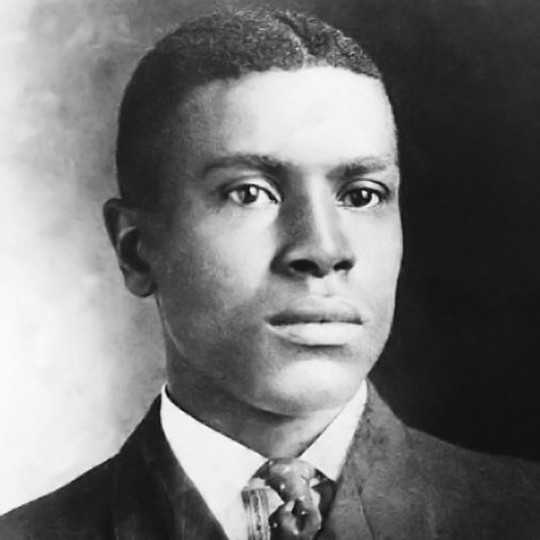

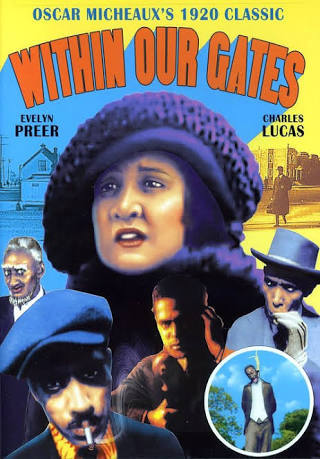
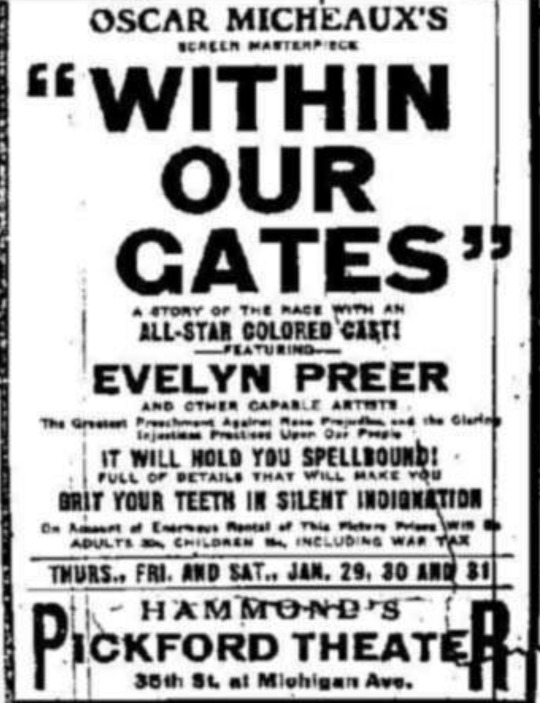
Oscar Micheaux - First Black Film maker
Oscar Micheaux, the country's first major Black filmmaker, was a true pioneer of his time. Throughout his filmmaking career, he wrote and directed a total of 43 movies, which included 27 silent films and 16 sound features. Though not all of them were successful, some were so controversial that they were banned from theatres. Operating in the first half of the 20th century, Micheaux was committed to depicting contemporary Black life and complex characters in his films, countering the negative on-screen portrayal of Blacks at the time. His travels took him from Southern Illinois to the West, South America, and Europe, and his work and art brought him to live in Sioux City's West 7th Street neighbourhood.
Born in 1884, Micheaux had tried his hand at several vocations before embarking on a film career. After moving to Chicago from a small Illinois town at 17 years old, he shined shoes and worked in the meatpacking and steel industries before landing a job as a porter for the American railway system. This stable job allowed him to travel, save money, and make connections with wealthy people who later helped finance his films.
In 1904, Micheaux moved to South Dakota and became a successful homesteader amid a predominantly blue-collar white population. The government's Homestead Act allowed citizens to acquire a free plot of land to farm, but discrimination kept many Blacks from pursuing a homestead. Micheaux began writing about his experiences on the frontier, submitting articles to the press as well as writing novels. After setting up his own film and book publishing company, Michaeux released The Homesteader in 1919, a silent black-and-white film that featured a Black man who enters a rocky marriage with a Black woman played by the pioneering African American actress Evelyn Preer. The film received critical acclaim for depicting realistic relationships between Black and white people, with one critic calling it a "historic breakthrough, a creditable, dignified achievement."
Micheaux followed up his successful production with his second film, Within Our Gates (1920), seeking to challenge the heavy-handed racist stereotypes shown in D.W. Griffith's film The Birth of a Nation. In his films, the first by a Black American to be shown in white movie theatres, Micheaux portrayed racial injustice suffered by Black Americans, delving into topics such as lynching, job discrimination, and mob violence. Given the restrictions of the time, Micheaux's prolific career was ground-breaking.
Micheaux died in 1951 at the age of 67 while on a business trip, but his legacy lived on. Not only did his work empower African Americans and help break stereotypes, but it also influenced other filmmakers. Spike Lee, John Singleton, and Melvin VanPeebles often credit Micheaux as one of their greatest influences and as a true film pioneer. Today, Micheaux is recognized as a man ahead of his time, whose films challenged negative portrayals of Black people and contributed to the progress of the film industry.
HR - ( naacp.org. (n.d.). Oscar Micheaux | NAACP. [online] Available at: https://naacp.org/find-resources/history-explained/civil-rights-leaders/oscar-micheaux#:~:text=Micheaux%20used%20his%20films%2C%20the.)
HR - (Oscar (2016). Sioux City Public Museum. [online] Sioux City Public Museum. Available at: https://www.siouxcitymuseum.org/history-website/micheaux-oscar#:~:text=Not%20only%20did%20Micheaux.)
HR - (Chester J. Fontenot. “Oscar Micheaux, Black Novelist and Film Maker” Vision and Refuge: Essays on the Literature of the Great Plains. University of Nebraska Press, 1982, pp. 109-25.)
HR - ( Musser, C., Gaines, J.M. and Bowser, P. (2016). Oscar Micheaux and His Circle: African-American Filmmaking and Race Cinema of the Silent Era. [online] Google Books. Indiana University Press. Available at: https://books.google.co.uk/books?hl=en&lr=&id=npbBCwAAQBAJ&oi=fnd&pg=PP1&dq=oscar+micheaux&ots=qFp32hiXsE&sig=ccRp1NwAGbEvhA0V1ovw7ib3o2w&redir_esc=y#v=onepage&q=oscar%20micheaux&f=false)
1 note
·
View note